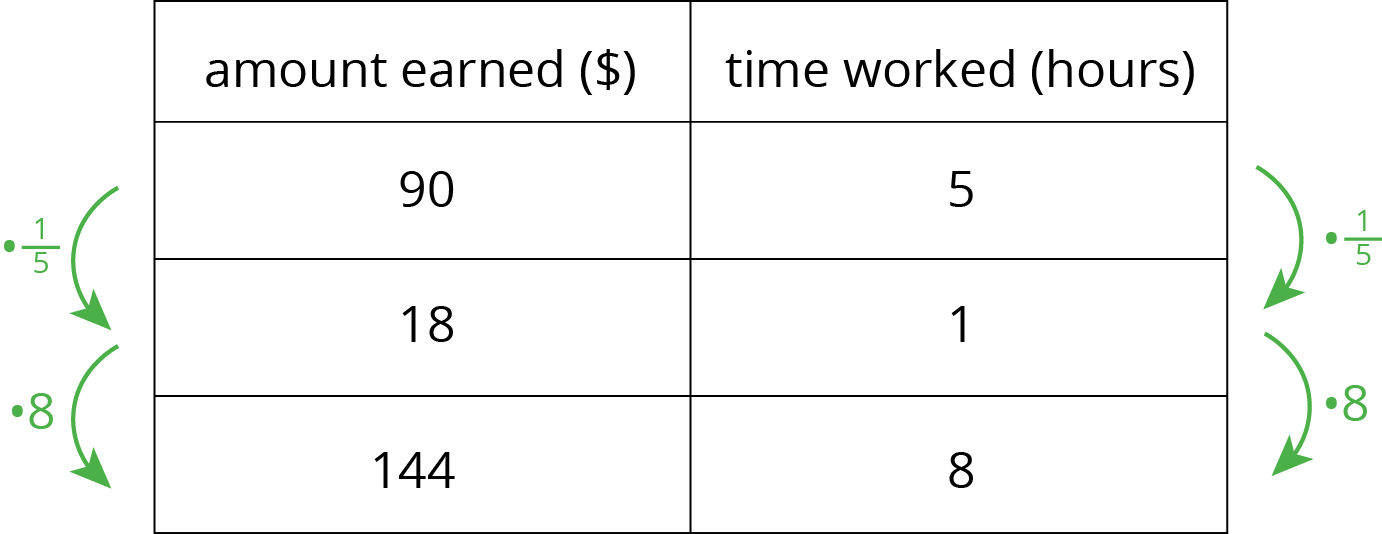Lesson 12
Navigating a Table of Equivalent Ratios
Lesson Narrative
The purpose of this lesson is to develop students’ ability to work with a table of equivalent ratios. It also provides opportunities to compare and contrast different ways of solving equivalent ratio problems.
Students see that a table accommodates different ways of reasoning about equivalent ratios, with some being more direct than others. They notice (MP8) that to find an unknown quantity, they can:
- Find the multiplier that relates two corresponding values in different rows (e.g., “What times 5 equals 8?”) and use that multiplier to find unknown values. (This follows the multiplicative thinking developed in previous lessons.)
- Find an equivalent ratio with one quantity having a value of 1 and use that ratio to find missing values.

All tasks in the lesson aim to strengthen students’ understanding of the multiplicative relationships between equivalent ratios—that given a ratio \(a:b\), an equivalent ratio may be found by multiplying both \(a\) and \(b\) by the same factor. They also aim to build students’ awareness of how a table can facilitate this reasoning to varying degrees of efficiency, depending on one’s approach.
Ultimately, the goal of this unit is to prepare students to make sense of situations involving equivalent ratios and solve problems flexibly and strategically, rather than to rely on a procedure (such as “set up a proportion and cross multiply”) without an understanding of the underlying mathematics.
To reason using ratios in which one of the quantities is 1, students are likely to use division. In the example above, they are likely to divide the 90 by 5 to obtain the amount earned per hour. Remind students that dividing by a whole number is the same as multiplying by its reciprocal (a unit fraction) and encourage the use of multiplication (as shown in the activity about hourly wages) whenever possible. Doing so will better prepare students to: 1) scale down, i.e., to find equivalent ratios involving values that are smaller than the given ones, 2) relate fractions to percentages later in the course, and 3) understand division of fractions (including the “invert and multiply” rule) in a later unit.
Learning Goals
Teacher Facing
- Choose multipliers strategically while solving multi-step problems involving equivalent ratios.
- Describe (orally and in writing) how a table of equivalent ratios was used to solve a problem about prices and quantities.
- Remember that dividing by a whole number is the same as multiplying by an associated unit fraction.
Student Facing
Let’s use a table of equivalent ratios like a pro.
Learning Targets
Student Facing
- I can solve problems about situations happening at the same rate by using a table and finding a “1” row.
- I can use a table of equivalent ratios to solve problems about unit price.
CCSS Standards
Print Formatted Materials
For access, consult one of our IM Certified Partners.
Additional Resources
| Google Slides | For access, consult one of our IM Certified Partners. |
|
| PowerPoint Slides | For access, consult one of our IM Certified Partners. |